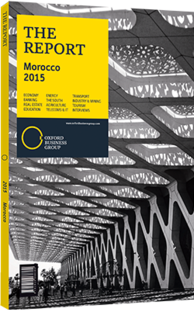Morocco establishes new rules to address exposure to equity market
The Moroccan insurance industry is one of the kingdom’s largest sectors of institutional investors. It is heavily invested in local equities, which has given rise to concerns that this is exposing it to high levels of risk. However, plans to gradually introduce new solvency regulations should mitigate this by making insurers choose between putting up additional capital to cover the risks or reducing their equity holdings. Sector investments are likely to have performed well in 2014 and should have a strong 2015, though falling interest rates will make it harder for firms to find new fixed-interest investments to cover savings product liabilities.
The value of funds arising from insurance activities invested by Moroccan insurers stood at Dh113bn (€12.3bn) in 2013, up from Dh109bn (€11.7bn) in 2012, according to data from the Department of Insurance and Social Welfare (Direction des Assurances et de la Prévoyance Sociale, DAPS). Insurance companies in the kingdom are heavily exposed to the equity market; equities (including shares listed on the stock market, non-listed equity holdings and equity funds) accounted for 43% of invested funds, compared to around 6% in France, for example. Sector investments are particularly exposed to the local banking industry: of listed equities held by the sector, 71% were in banks. Bond funds accounted for 23% of total sector investments, corporate and state-backed public enterprise bonds for 12%, treasuries for 10% and real estate for 4%, among other investment classes.
Concerns
According to local media, the regulatory authorities are concerned by the high proportion of insurance funds invested in equities – which tend to be more volatile than, for example, treasuries – and the risks these pose to the industry. Yet they are also keen to avoid any changes that cause a major shock to the country’s stock market – insurance investments in equities are equivalent to roughly 10% of the total capitalisation of the stock market (though as noted above, insurance equity investments include non-listed equity ownership shares), so a quick drawdown could have a major negative impact. Low levels of liquidity on the Casablanca Stock Exchange add to the potential risk of such heavy investment in local stocks and to the market impact of large-scale sales, though the liquidity situation is expected to improve in 2015 with an increase in liquidity levels in the wider economy. The large proportion of investments in equities suggests a shortage of other investment options for insurance firms. One constraint is their inability to invest in foreign assets. “It is unfortunate that companies are not able to invest abroad, as the local market is limited in size,” Taoufik Drhimeur, the vice-president of RMA Watanya told OBG.
Reform
One change that could push companies to reduce their equity holdings is the planned gradual introduction of the EU’s Solvency II insurance solvency standards in the kingdom, which would effectively require firms to increase their own capital to compensate for the risks involved. The authorities appear keen, however, that such changes should not have a major negative impact on local capital markets. In particular, there have been concerns that the introduction of the standards – which in the EU limit the proportion of funds investors can place in BBB-rated bonds – could introduce new investment constraints, and in particular imperil firms’ ability to invest in government bonds, as these are rated at BBB-. However, it appears that local firms will be exempted from this requirement.
Performance
Insurance firms’ investment revenues for 2013 came in at Dh4.1bn (€446m), down 1% from the previous year, including Dh2.1bn (€228m) from bond holdings and Dh1.4bn (€152m) from equity holdings. While the DAPS has yet to publish figures for 2014, investment revenues were likely up, given that the benchmark Moroccan all-share index rose by 5.6% over the year, while interest rates fell, boosting the values of bond holdings. However, lower interest rates will increase the challenge firms face in finding fixed-income investments with a sufficiently high yield to cover their savings product liabilities in the future, as new bond investments will produce lower yields.
You have reached the limit of premium articles you can view for free.
Choose from the options below to purchase print or digital editions of our Reports. You can also purchase a website subscription giving you unlimited access to all of our Reports online for 12 months.
If you have already purchased this Report or have a website subscription, please login to continue.

